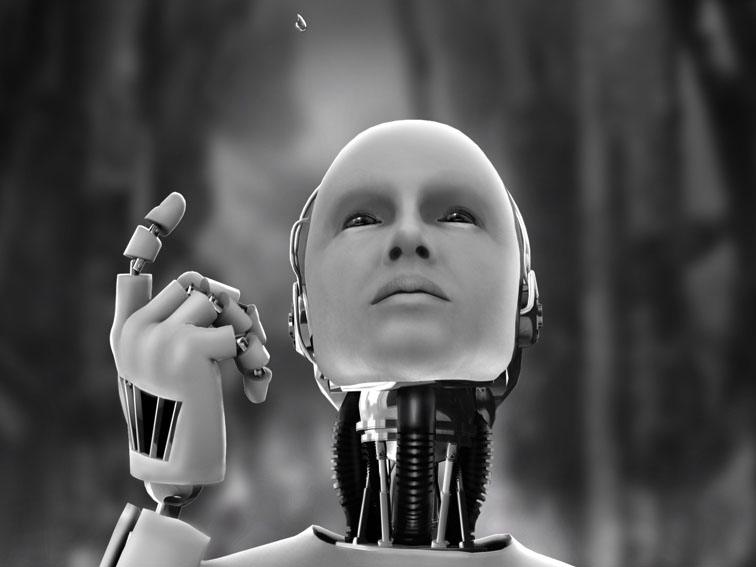Are audio-visual modes dominating written modes?
Throughout my reading of module 4 section: The Educated Imagination in the Information Age: Redefining our Understandings of Literacy, I could not resist expressing my view on how audio-visual modes will replace the text side of research and content sorting/ranking on the web. Two things came to my mind; artificial intelligence and voice assistants such as Siri and Cortana.
The future is having the web as your assistant. It can be through your PC, smartphone or your wearable technology. AI was first introduced by John McCathry “the father of artificial intelligence” (Rajaraman, 2014). Learning is currently being affected by AI. Students are not using their keyboards or mouse, yet they are using their voice. Google is offering Google Voice for search, Apple is offering Siri and Microsoft is offering Cortana. Students find it faster and more efficient to find information this way (Brunsell & Horejsi 2013).
AI can be used to offer customised learning for students according to their own learning styles and environment (Kay 2012). AI can help in assembling learning objects for a number of topics according to the learners needs & learning style (Garrido, & Onaindia, 2013; 2011). AI will attempt to sort and filter BigData it in a more relevant manner to the user and make more sense out-of-it (Woolf, Lane, Chaudhri, & Kolodner 2013).
AI is what will trigger the use of wearable technologies and may cause the death of apps as we know them. Apps will connect to the AI and be fully controlled by the AI replacing the need for the user to access the app UI. AI may replace the need for UI in apps and software developers will focus on building backend programs that connect to the AI interface.
Audio-visual modes will become the tools that AI use to deliver knowledge to us or even make conclusions or recommendations. Of course this is for sure a risk of having giant organisations such as Google, Microsoft, and Apple control what and how we receive information. Yet this is the case now with media on TV and on the web. We are fed information that is most of the time bias and inaccurate. One more challenge in AI is that it generates a lot of code while learning and consumes more space. There is increasing focus in creating artificial intelligence that consumes less code while learning in order to make the computer learning process more efficient (Coppula, 1998). Yet still if AI replaces the web UI as we know it this will save a lot of web storage and may accommodate for the AI generated code.
Brunsell, E., & Horejsi, M. (2013). Meet siri, your new lab partner. The Science Teacher, 80(5), 8.
Coppula, D. (1998). Artificial intelligence: Where science fiction meets reality. ASEE Prism [H.W.Wilson – EDUC], 7, 18.
Garrido, A., & Onaindia, E. (2013; 2011). Assembling learning objects for personalized learning: An AI planning perspective. IEEE Intelligent Systems, 28(2), 64-73.
Kay, J. (2012). AI and education: Grand challenges. IEEE Intelligent Systems, 27(5), 66-69.
Rajaraman, V. (2014). JohnMcCarthy — father of artificial intelligence. Resonance, 19(3), 198-207.
Woolf, B. P., Lane, H. C., Chaudhri, V. K., & Kolodner, J. L. (2013). AI grand challenges for education. AI Magazine, 34(4), 66.


It is vital to study the effect of the AI on the learning process of individuals and the possibilities that may arise as the dependence on this kind of technology increases day after day. There is a need to construct communication tools and protocols between humans and the artificial intelligent machines to serve humanity and make this world safer and peaceful. Unfortunately, some military brains think to employ the artificial intelligence to censor, control, and even to destruct humans without any hesitation or having any mercy in order to keep controlling the world. I am not worried from the role of technology especially the AI on the humanity. I am worried about the criminal minds of some individuals and governments that would do everything possible to create chaos all around the world and to keep dominating it. Communication as we studied and noticed has been expanded from being between individuals into becoming between individuals and machines to even between machines to machines. The Internet of Things (IoT) is a type of AI that is shifting communication into a higher level and is reshaping the communication between the humanity and machines. Digital representations are the tools that are being used in this new type of relation. However, I expect that these digital representations and artefacts would be minimized in the future as new machines with the help of AI may eliminate the need of human being to select what they would like as the AI will be able to select for them.
Bassam
Very insightful post Nidal. Specifically, I think of Catherine Steeves post (Making Connections) in stating that technology is both produced and caused by societal changes. I think of the ways in which technology emerges as a form of communication. Looking at the popularization of photography, Kodak had a significant role in the use of cameras in the day-to-day world. I wonder in these instances if the need comes first or the production from large companies, as you mention above, to produce come with effective marketing to make it successful.
Laura